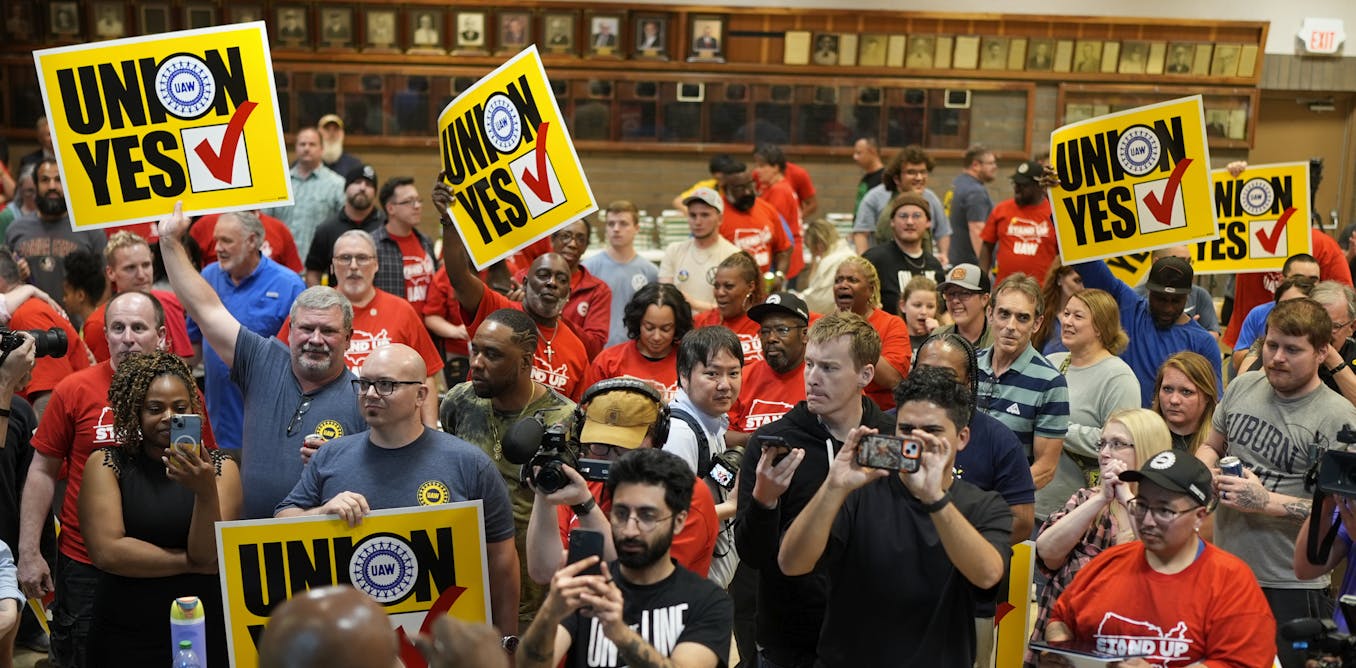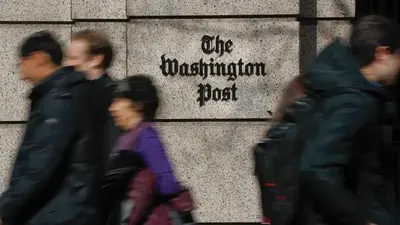Business
Silicon Valley Bank: How a digital bank run accelerated the collapse
The collapse of Silicon Valley Bank, the second-biggest bank failure in U.S. History, took place over less than 48 hours.
Customers withdrew $42 billion -- nearly a quarter of the bank's total deposits -- within a single day last week.
The speedy bank run has raised questions about the fragility of financial institutions in a digital environment marked by easy cash withdrawals and the spread of information on social media and other spaces online, where panic among a few can grow into a stampede for the exit.
Such a possibility, known as a digital bank run, heightens the risk of a sudden, widespread cash withdrawal, especially among a group of depositors who share an industry and social ties -- like the depositors in Silicon Valley Bank, experts told ABC News.
MORE: What to know about FDIC insurance and how your money is protected
"This was the first Twitter-fueled bank run," Rep. Patrick McHenry, R-N.C., the chair of the House Financial Services Committee, said in a statement days after the fall of Silicon Valley Bank.
The group of depositors in Silicon Valley Bank was made up of a relatively small set of venture capital firms, tech startups and other large investors.
After a woeful financial report last Wednesday set off concern, some of the depositors discussed their reactions in WhatsApp and Slack groups devoted to startups, the Wall Street Journal reported.
MORE: Is this a banking crisis? What to know about the Silicon Valley Bank collapse
Meanwhile, several prominent venture capitalists and other major investors voiced their concern on Twitter, amplifying fears of a collapse.
Michael Burry, an investor best known for predicting the subprime mortgage crisis in 2008, warned in a now-deleted tweet: "It is possible today we found our Enron."
On Thursday, shares of Silicon Valley Bank fell 60% in response to concern about the bank's distressed financial position.
By the early afternoon, the sudden decline of the bank took over online discussions among startup founders, according to entrepreneur Alexander Torrenegra.
"All of my chats with tech founders in the US light on fire with what's happening," Torrenegra recounted on Twitter. "Obviously, we have a bank runoff. Surreal."
Founders Fund, a venture capital fund led by billionaire investor Peter Thiel, withdrew all of its deposits that day, Bloomberg reported.
MORE: A timeline of the Silicon Valley Bank collapse
Since the bank is FDIC-insured, depositors were guaranteed protection of up to $250,000 in funds for different types of accounts held in the event of a collapse. However, many depositors in Silicon Valley Bank held accounts that far exceeded $250,000, raising the stakes for those who failed to remove their funds before a potential bank failure.
"Because information comes out faster, you get the information in real time, it's widespread and it leads people to take action," Campbell Harvey, a finance professor at Duke University, told ABC News. "If you're the first group out, you get 100% of your money and if you're the last group out, you potentially get zero."
Hilary Allen, a professor at the American University Washington College of Law who studies banking regulation, said the relatively small and tight-knit community of bank depositors helped accelerate the downfall.
"Virtually all of the depositors were from the same community and a community that was very online," Allen told ABC News. "If you've got something like Silicon Valley Bank, where the vast majority of depositors are in the tech industry and are very connected and all speaking to one another, those are the circumstances in which a panic can really flourish very, very quickly."
To be sure, investors who fled the bank held well-founded concerns about its financial Health.
Silicon Valley Bank had loaded up on investments into long-term Treasury bonds and mortgage bonds, which typically deliver small but reliable returns amid low interest rates. As the Federal Reserve aggressively hiked interest rates over the past year, however, those holdings lost significant value.

A day before the major cash withdrawal, Silicon Valley Bank announced that it had lost $1.8 billion on the sale of those distressed bonds.
"This isn't purely a bank run," Itamar Drechsler, a professor of finance at the University of Pennsylvania's Wharton School of Business, told ABC News. "The bank had a very fundamental problem."
MORE: Why are some Republicans blaming bank failures on 'woke' policies?
Still, the speed and reach of online communication likely accelerated the bank's collapse, Dreschler said.
"Like a crowd that moves together very fast, if it decides to exit someplace, there's a problem," Dreschler said. "If we coordinate more through social media and other information technology, that can cause the crowd to move a lot faster."
While digital banking allows for quick and easy withdrawals, the availability of such a service likely contributed little or not at all to the bank run, since such Technology has existed for many years without significant issue, the experts said.
"People have been talking for a while about whether the speed of digital banking itself would contribute to bank runs," said Allen, of American University. "My view on that is it has been relatively easy to get your money out for quite a while now. I'm not sure how much of a difference that has made."
In response to the outcry and fearing wider spread of the crisis, the FDIC, Treasury Department and the Fed ultimately took a major step on Sunday, telling depositors in Silicon Valley Bank that the FDIC would protect all of their funds, including those that exceed the $250,000 limit.
MORE: Silicon Valley Bank collapse: Treasury, Fed and FDIC announce steps to ensure deposits will be paid in full
Later that day, the Fed announced an emergency lending program to cover the deposits at issue and restore wider confidence in the financial system.
The spread of panic online may have contributed to the federal government's decision to take such extraordinary action and prevent uncertainty from seeping further into the financial system, Allen said.
"Was that part of the concern that motivated the Biden administration to step in because it was worried that the very public venting on Twitter might transfer to other banks, as well?" she asked.
MORE: Justice Department, SEC probing collapse of Silicon Valley Bank: Sources
On Monday, in a morning address from the White House, President Joe Biden sought to reassure Americans that the banking system was sound.
"Americans can rest assured that our banking system is safe," Biden said. "Your deposits are safe. Let me also assure you, we will not stop at this. We'll do whatever is needed."
Biden also addressed the issue that day in a Twitter post.
ABC News' Libby Cathey contributed reporting.
-

 Business7h ago
Business7h agoMusic Icon and Hall of Famer Appearing at Popular Bookstore
-

 Business20h ago
Business20h agoMay 1st RI State House event launches Mental Health Month programs. Awards, personal stories.
-

 Business1d ago
Business1d agoThe Significance of Selecting Eco-Pleasant Upholstery Cleansing Providers for a More healthy Dwelling Setting
-

 Business1d ago
Business1d agoUAW wins big at Volkswagen in Tennessee – its first victory at a foreign-owned factory in the American South
-

 Business1d ago
Business1d agoHEADS-UP – Thrilling new water park to create jobs and make waves in seaside city after planning inexperienced gentle
-

 Business1d ago
Business1d agoNationwide Weaving
-

 Business1d ago
Business1d agoWooded Resort Style Home For Sale In Catskill, New York
-

 Business1d ago
Business1d agoAsk Chef Walter: Grain’s most popular five – Walter Potenza



























